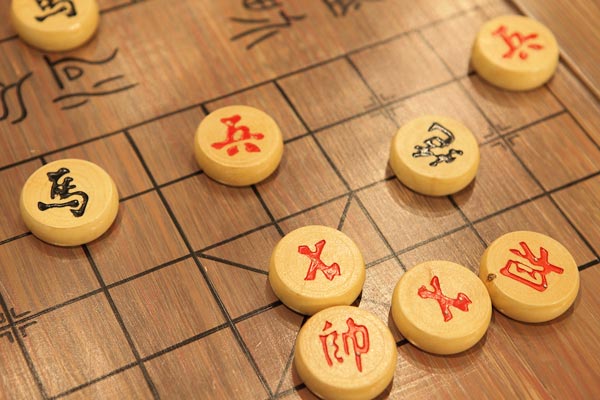Chengdu Lacquer Art, a traditional handicraft of Chengdu, Sichuan Province, China, is one of the national intangible cultural heritages of China. Chengdu Lacquer Art originated in the Shang and Zhou Dynasties, matured in the Han Dynasty, flourished in the Tang Dynasty, and continued to develop in the Song, Ming and Qing Dynasties, with a long history.

Historical Origin
Chengdu Raw Lacquer has a very long history, which can be traced back to the ancient Shu period more than 3,000 years ago. During the Warring States Period, Chengdu lacquerware was spread all over China, and the level of Chengdu lacquer art was quite developed at that time.
During the Western Han Dynasty, on the basis of the original technology, Chengdu Lacquer Art invented the needle-scratching gold filling method and the piled lacquer method of filling patterns with thick materials. In particular, the techniques of inlaying metal flowers and leaves on the top of the vessel, using agate or glass beads as buttons, and inlaying gold and silver buckles and hoops on the mouth and body of the vessel were very popular.
At that time, Shu County and Guanghan County were already the national lacquerware production centers, with varieties including boxes, baskets, plates, ear cups, flat pots, tables, scrolls, etc. The lacquerware had patterns of birds, beasts, gods, etc. carefully painted with colors, which were very delicate and beautiful. The lacquerware produced in Chengdu, Pi County and the north of Guanghan County in Sichuan had formed its own style and was independent.

During the Five Dynasties, Chengdu's gold and silver inlaid lacquerware reached a fairly high level of craftsmanship. Judging from the large number of coffins, coffins, book boxes, treasure records, mirror boxes and other lacquerware unearthed from Wang Jian's tomb, the lacquer art level at that time was very high.
Chengdu lacquer art reached an almost unsurpassed height in the Tang Dynasty. There were piled lacquerware with raised patterns formed by thick lacquer; mother-of-pearl ware with objects cut into shells, line carvings and inlaid patterns on the lacquer surface; gold and silver flat-peeled ware inlaid with gold and silver flower pieces, etc., which fully demonstrated the superb craftsmanship of Chengdu lacquerware at that time.
In the Ming and Qing Dynasties, Chengdu had become one of the production bases of carved lacquerware and filled with color in China. There are 14 types of Chengdu lacquerware, including single-color lacquerware, covered lacquerware, gold-drawing, piled lacquerware, filled lacquerware, carved and filled, mother-of-pearl, rhinoceros skin, carved red, carved rhinoceros, colored, gold-stirred, and inlaid with treasures.
In modern times, Chengdu lacquerware has formed its own unique style. Its traditional handicrafts and regional characteristics such as carved and filled with color, silver flakes, inlays and depictions are unanimously praised by people. It is still one of the five major lacquerware in China, along with Beijing, Fujian, Yangzhou, and Yangjiang, Guangdong.

Technology characteristics
Chengdu lacquer art has many techniques, delicate workmanship, and long production time. It is known as "carved and engraved, hundreds of skills and thousands of workers". Its raw material formula is complex, reflecting the important inventions of ancient China in chemical technology; the decoration technique is unique, with unique skills with regional characteristics such as "carving and filling, carving and tin silk, inlay and depiction", and rare techniques such as "flat drawing and tracing, broaching and needle engraving, and lacquer piling", forming its own school, which is unique in lacquerware craftsmanship and has a unique style.
The carving and filling technology and tin plate flat support in Chengdu lacquer art are both elegant in shape, exquisite and beautiful in craftsmanship, and warm. Because the color of the carving and filling technology is like gray paste, in contrast with the crystal clear paint surface, it shows its restrained and elegant quality and gentle and quiet color, giving people a sense of affinity. In the tin plate flat support artwork, the metal refraction is flashing, the changes are wonderful, and the paint surface is implicit and tolerant, giving people a generous and elegant aesthetic enjoyment.

Process flow
Chengdu lacquer art uses natural raw lacquer and solid wood as raw materials, including decoration techniques such as carving and filling, carving and filling shadow flowers, carving and tin silk, broaching and needle carving, and hidden flower changing painting. Taking the carving and inlaying technique as an example, it mainly includes the following steps:
- Design the tire sample, decorative drawings and make the wooden tire, and then apply several coats of polishing paint after the lacquer worker applies ash, brushes primer and polishes it many times, and each coat must be polished after drying.
- Carving and filling, that is, first copy the designed decorative drawings to the tire body, and carve out the intaglio picture with a knife. Then scrape the prepared colored paint into the intaglio pattern, and then use fine sandpaper to grind it until the pattern is flush with the paint surface after drying. You can also paste gold and silver foil in the intaglio pattern, and then cover it with multiple layers of transparent paint and grind it.
- Pushing and cleaning, that is, apply polishing paint on the surface of the lacquerware, grind it after drying, and then rub it with hair or cotton dipped in vegetable oil. After multiple cleaning and polishing, the surface of the lacquerware is glossy and gorgeous.

Inheritance value
Chengdu lacquer art is an important part of Chinese lacquer art. It is not only an important witness to the customs of the Chengdu area over the generations and an envoy of cultural exchange, but also an important carrier of traditional Chinese aesthetic concepts.
Inheritance status
Chengdu lacquer art faces many difficulties. First, Chengdu lacquer art can only be made through manual labor, and can only be passed on through oral transmission, which makes inheritance very difficult. Secondly, due to the small product market and the lack of successors to the production, Chengdu lacquer art is facing an embarrassing situation of no sales. Only by taking necessary protective measures as soon as possible can this ancient traditional handicraft be saved.




